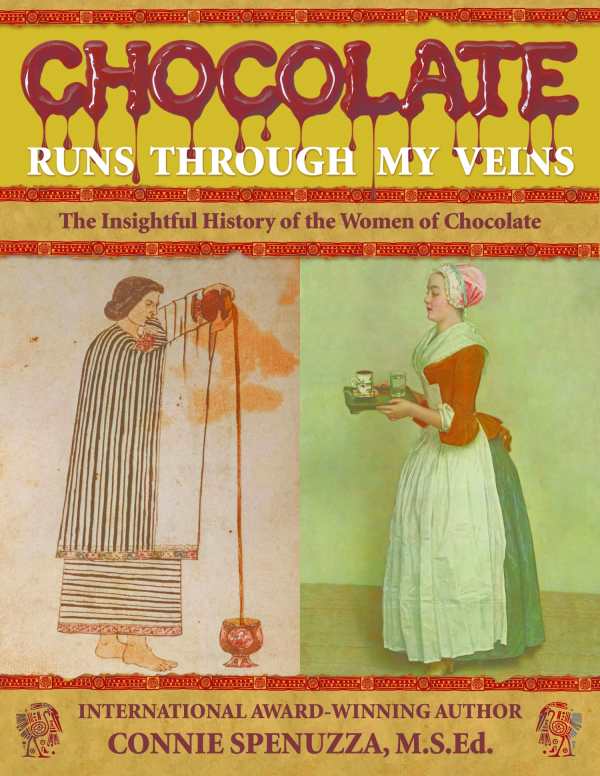
Chocolate Runs through My Veins
The Insightful History of the Women of Chocolate
Chocolate Runs Through My Veins is a riveting historical investigation into how the worlds of women and cocoa intersected.
Connie Spenuzza’s revelatory feminist history Chocolate Runs Through My Veins covers the agriculture, preparation, and worldwide trade of chocolate.
A Mayan vase, dated to 750 CE, depicts a woman serving a chocolate drink; it’s the first known depiction of chocolate in art. Ranging from that starting point to contemporary boxes of chocolate that were popularized by Valentine’s Day and invented by a woman, this informative book explains how cocoa came to dominate the global trade and cultures, all with the help of women.
Each topical chapter covers information related to cocoa’s rise in prominence, including slavery, Spain’s colonization of South America, and modern marketing campaigns geared toward women. Replete with academic references, the book elucidates events, facts, and relationships between prominent figures in the story of chocolate. Throughout, it also lauds women’s role in elevating chocolate to its current status, while also examining how chocolate influences women’s social roles.
Driven by subjects rather than chronology, the book conveys the scope of chocolate’s thousand-year influence well. Its examples of women throughout history preparing, serving, or otherwise using chocolate are concise and evidentiary; many focus on the ways that women used their confining roles as cooks and food-preparers to their advantage. In one account, a seamstress is advised to use a mixture of powders in chocolate to curb her husband’s anger; this and other incidents of “chocolate malfeasance” are fascinating angles to understanding the agricultural product’s history.
Written with a sense of authority, the book’s work is supported by extensive footnotes and a credible bibliography. Its prose commands attention, and its short chapters and pithy anecdotes ensure engagement. Also to its benefit: this intersectional work addresses the harsh realities of the slave trade and the sacrifices of working-class women to make the popularity of chocolate a reality. A balanced critique of imperialism plays in.
To provide some contemporary context, Spenuzza injects personal stories on occasion, discussing her upbringing in an Ecuadorian convent and her travels in adulthood, among other subjects. Elsewhere, images of historical figures, illustrations of the stages of cocoa production, and depictions of Indigenous South Americans add a pertinent visual angle the text.
Chocolate Runs Through My Veins is a riveting historical investigation into how the worlds of women and cocoa intersected.
Reviewed by
Aimee Jodoin
Disclosure: This article is not an endorsement, but a review. The publisher of this book provided free copies of the book and paid a small fee to have their book reviewed by a professional reviewer. Foreword Reviews and Clarion Reviews make no guarantee that the publisher will receive a positive review. Foreword Magazine, Inc. is disclosing this in accordance with the Federal Trade Commission’s 16 CFR, Part 255.
